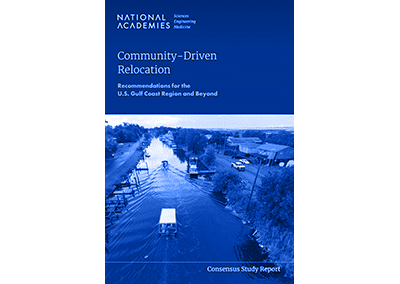Read moreRunaway change for Earth system elements and climate tipping points

Mitigating the Effects of Climate Change with Nature-based Solutions
Nature-based solutions hold the potential to make a significant impact on mitigating the effects of climate change. By harnessing the power of ecosystems and biodiversity, we can reduce our carbon emissions and remove existing greenhouse gases from the atmosphere. A standard nature-based solution is reforestation and afforestation. By planting trees, we can capture carbon dioxide from the atmosphere, reducing the concentration of greenhouse gases. Healthy and diverse forests also provide essential ecosystem services, such as regulating water cycles and preventing soil erosion.
Wetlands restoration is another nature-based solution that can play a crucial role in mitigating climate change. Wetlands act as natural carbon sinks, storing large amounts of carbon in the soil. Restoring wetland habitats sequesters carbon, provides valuable habitats for wildlife, and reduces the impacts of natural disasters. Sustainable land management practices, such as agroforestry and conservation agriculture, can help to improve soil health and increase carbon storage in agricultural lands. In summary, nature-based solutions offer a practical approach to combating climate change.
ClimaTwin® is a leading climate risk intelligence solution for infrastructure assets and the built environment.
We empower infrastructure stakeholders to mitigate climate risks and assess adaptation actions across the total asset lifecycle. By connecting complex climate models and infrastructure digital twins, our solution enables owner-operators, investors, governments, engineers, and other decision-makers to aggregate, visualize, and analyze disparate datasets, revealing site-specific insights at a hyper-local scale. Benefits include 5-10x near-term returns and lifetime cost-avoidance by mitigating risks to systems, services, and societies.
To learn more about climate risk intelligence for your infrastructure assets, please visit www.climatwin.com today.
© 2024 ClimaTwin Corp. ClimaTwin® is a registered trademark of ClimaTwin Corp. ClimaTwin Basic™, ClimaTwin Enterprise™, the ClimaTwin logo, and Climate Risk Intelligence for Infrastructure Digital Twins™ are trademarks of ClimaTwin Corp. All rights reserved.
###

Complexity of Community Relocation in the Face of Environmental Challenges
Community-Driven Relocation: Recommendations for the U.S. Gulf Coast Region and Beyond provides a comprehensive and insightful examination of the complex issues surrounding community relocation in the face of environmental challenges. The book, published by the National Academies of Sciences, Engineering, and Medicine, thoroughly analyzes the social, economic, and environmental factors that drive the need for relocation in the U.S. Gulf Coast region and provides recommendations for effective and equitable relocation processes.
The book presents a range of case studies and examples of community-driven relocation initiatives, offering valuable insights into the diverse challenges and opportunities accompanying such efforts. It also addresses the ethical considerations and potential injustices that may arise in forced relocation, stressing the importance of community involvement and agency in the decision-making process.
The authors demonstrate a nuanced understanding of the complex dynamics in relocation efforts and provide thoughtful recommendations for policymakers, community leaders, and other stakeholders. The book is invaluable for readers interested in understanding the complexities of community-driven relocation and seeking practical guidance for implementing successful relocation initiatives. Community-Driven Relocation is a timely and informative contribution to the ongoing discourse on climate-related displacement and community resilience.
Synopsis
“Between 1980 and mid-2023, 232 billion-dollar disasters occurred in the U.S. Gulf Coast region, with the number of disasters doubling annually since 2018. The variety and frequency of storms have exacerbated historic inequalities and led to cycles of displacement and chronic stress for communities across the region. While disaster displacement is not a new phenomenon, the rapid escalation of climate-related disasters in the Gulf increases the urgency to develop pre-disaster policies to mitigate displacement and decrease suffering. Yet, neither the region nor the nation has a consistent and inclusionary process to address risks, raise awareness, or explore options for relocating communities away from environmental risks while seeking out and honoring their values and priorities.”
“Community-Driven Relocation: Recommendations for the U.S. Gulf Coast Region and Beyond examines how people and infrastructure relocate and why community input should drive the planning process. This report provides recommendations to guide a path for federal, state, and local policies and programs to improve on and expand existing systems to better serve those most likely to be displaced by climate change.”
Contributor(s): National Academies of Sciences, Engineering, and Medicine; Division of Behavioral and Social Sciences and Education; Board on Environmental Change and Society; Committee on Population; Committee on Managed Retreat in the U.S. Gulf Coast Region.
(Source: National Academies of Sciences, Engineering, and Medicine. 2024. Community-Driven Relocation: Recommendations for the U.S. Gulf Coast Region and Beyond. Washington, DC: The National Academies Press. https://doi.org/10.17226/27213.)
ISBN: 978-0-309-70872-2
DOI: https://doi.org/10.17226/27213
© 2024 National Academy of Sciences. All rights reserved.
ClimaTwin® is a leading climate risk intelligence solution for infrastructure assets and the built environment.
We empower infrastructure stakeholders to mitigate climate risks and assess adaptation actions across the total asset lifecycle. By connecting complex climate models and infrastructure digital twins, our solution enables owner-operators, investors, governments, engineers, and other decision-makers to aggregate, visualize, and analyze disparate datasets, revealing site-specific insights at a hyper-local scale. Benefits include 5-10x near-term returns and lifetime cost-avoidance by mitigating risks to systems, services, and societies.
To learn more about climate risk intelligence for your infrastructure assets, please visit www.climatwin.com today.
© 2024 ClimaTwin Corp. ClimaTwin® is a registered trademark of ClimaTwin Corp. ClimaTwin Basic™, ClimaTwin Enterprise™, the ClimaTwin logo, and Climate Risk Intelligence for Infrastructure Digital Twins™ are trademarks of ClimaTwin Corp. All rights reserved.
###
Read moreDemand for air conditioning to increase, leading to a higher number of cooling degree days
Read moreHeat island effect can exacerbate the impact of extreme heat days

Impact of Climate Change On Sea Level Rise and Coastal Infrastructure
Climate change is projected to impact the rise of sea levels significantly. As global temperatures continue to rise, the polar ice caps and glaciers are melting at an accelerated rate. This influx of melted ice is gradually causing sea levels to rise, threatening coastal communities and natural habitats worldwide. The melting of polar ice caps and glaciers contributes to rising sea levels by adding more water to the oceans. This increased volume of water can lead to flooding in low-lying coastal areas, damaging infrastructure and displacing communities. In addition, the influx of saline water can intrude into freshwater sources, jeopardizing agricultural lands and drinking water supplies.
Rising sea levels can also exacerbate the impacts of storm surges and high tides, leading to more frequent and severe coastal inundation events. These events can cause erosion of coastlines, loss of habitats, and damage to infrastructure assets and the built environment, threatening human and ecological communities. In conclusion, climate change will continue exacerbating the rise in sea levels, significantly impacting coastal communities and ecosystems. Adaptation and mitigation strategies are essential to address these challenges and safeguard the future of our planet.
ClimaTwin® is a leading climate risk intelligence solution for infrastructure assets and the built environment.
We empower infrastructure stakeholders to mitigate climate risks and assess adaptation actions across the total asset lifecycle. By connecting complex climate models and infrastructure digital twins, our solution enables owner-operators, investors, governments, engineers, and other decision-makers to aggregate, visualize, and analyze disparate datasets, revealing site-specific insights at a hyper-local scale. Benefits include 5-10x near-term returns and lifetime cost-avoidance by mitigating risks to systems, services, and societies.
To learn more about climate risk intelligence for your infrastructure assets, please visit www.climatwin.com today.
© 2024 ClimaTwin Corp. ClimaTwin® is a registered trademark of ClimaTwin Corp. ClimaTwin Basic™, ClimaTwin Enterprise™, the ClimaTwin logo, and Climate Risk Intelligence for Infrastructure Digital Twins™ are trademarks of ClimaTwin Corp. All rights reserved.
###
